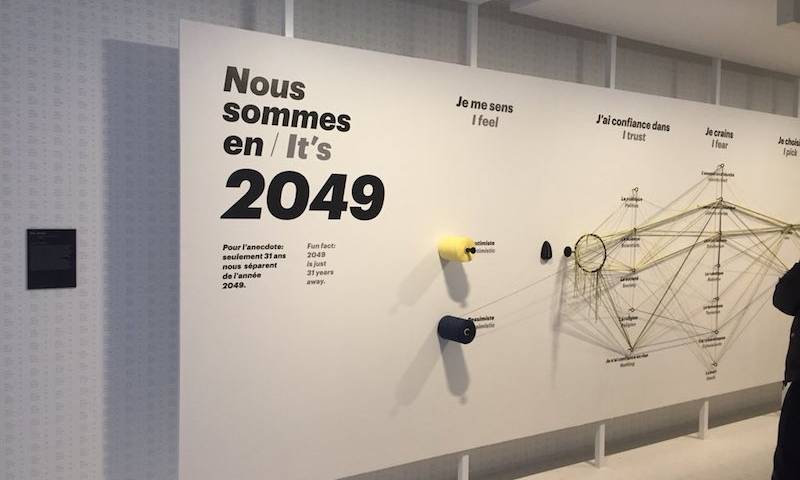May 13, 2019 - 2 min read
Art as a key to AI-driven innovation
As artificial intelligence (AI) and data science have ever more applications in our real life, they face major issues when it actually comes to make people use them. Sadly, numerous media push for a fight-or-flight response to AI. Art can be a powerful tool to engage people into its workings and build a positive framework.

source: Le parisien
Art pulls data into our physical world
In last year 1 2 3 data exhibition, one of the very first piece of art was about being an active and conscious part of data generation. With just one string and a board with pined answers to questions, the visitor could actually reply by tying the string to the adequate pins/answers that one felt adequate (see below and here). What is interesting here is that you are immediately part of the big picture. Obivously, the general trend is bound to have a few biases. Visitors are influenced by how others have replied or by the look of other visitors watching, but it gives you a sense of what generating data is. Using certain applications such as social networks allow us to share our tastes that become a part of a bigger picture that service providers can use to understand our behaviors.

source: L’ADN
Art can foster understanding
Digital tools have totally reshaped our daily lives and continue to do so. “Artistes & Robots” exhibition presented the relationship between the digital world and art. Pascal Haudressy in “Brains” showed a simple yet powerful representation of our brains activity (see video below). What is interesting about this artwork is that the activity of the brain was programmatically simulated by purposefully inserting bugs into the image that would force the computer to modify it. This is actually what every living human being do, we face events and adjust our behaviour constantly to environemental cues. This is in strong opposition to what computers with artificial intelligence can actually do. They can learn to perform specific tasks, extremely accurately but they are still far away from general intelligence (if that is even possible is an other debate). Even though machines do not receive precise instructions with respect to the rules they apply, they can not perform outside a specific scope. The fear that AI will tomorrow do whatever it wishes is not accurate. This is the power of art, if one is willing, it can push us to rethink our reliationship to elements and further understand our world.
Digital art to enpower us
Real life data is messy and hard to comprehend due to its sheer complexity. Data scientists use technical tools and models to try to make sense of what is happening around us. A part of the work is also to engage non-specialists into the value of data and what it can do. As such, data science projects can rely on artful visuals to share knowledge. In addition, AI is often hidden behind the scene, powering web applications and other softwares to make us in general better informed.
At any stage in history art has expanded our understanding. I find it interesting to use it to help us embrace the global digital tranformation that our world is facing. I like John Maede perspective explaining that art is a necessity to scientifically driven innovation. It is what actually connects us to a better tomorrow.